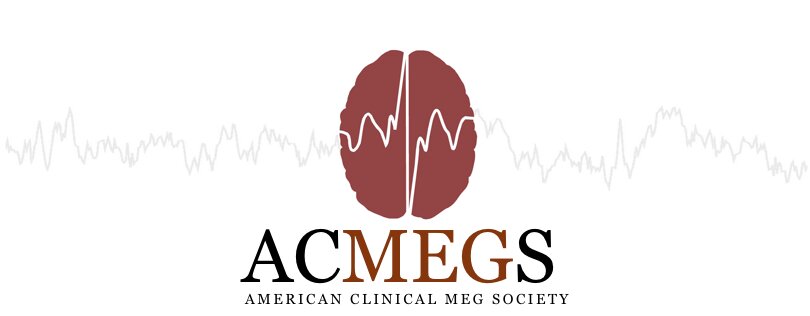Conference program
Final Program schedule
Download the program:
-
Keynotes
Hall A - Keynote 1: - Washington University School of Medecine (Attention & Brain recovery lab), Saint Louis, MO, USA
TITLE: Spontaneous brain activity: a key for understanding the mind and the pathophysiology of brain diseases.
Traditional accounts of brain function (Hubel and Wiesel 1968) emphasize the role of feedforward information processing in generating from the ’ground up’ sensory, cognitive, and motor representations that implement behavior. Such feedforward ’sensory-motor’ models have been successful in linking activity recorded from single neurons to perceptual decisions 1.
However, a different class of models suggests that the brain is not a passive analyzer driven by sensory information, but that it actively generates and maintains predictions (priors) about forthcoming sensory stimuli, cognitive states and actions 2. This class of models emphasizes the role of spontaneous activity in maintaining active representations that are modulated rather than determined by sensory information. Accordingly, spontaneous activity should not be random (as often implied by its dismissal as mere ’noise’), but organized into structured spatiotemporal profiles that reflect the functional architecture of the brain, possibly encode traces of previous behavior, or even predict future decisions.
Experimental and theoretical evidences reveal that the spontaneous ongoing activity of local cortical circuits result from a global balance between excitatory and inhibitory synaptic currents. At the level of large-scale cortical circuits, organized spatiotemporal patterns of spontaneous or intrinsic activity have been recently described in the resting state, hence Resting State Networks (RSNs) 3. In my lecture I will describe the topography and functional organization of RSNs in the human brain, their neurophysiological basis, and their potential functional significance 4, 5. Finally, the importance of RSNs for clinical neurology as a bioassay of brain function will be illustrated in the case of stroke, in whom we observe that abnormality of interhemispheric communication, even in the absence of structural damage, seems to correlate with behavioral deficits of movement and attention 6.
1. Shadlen M, Britten KH, Newsome WT, Movshon JA. A computational analysis of the relationship between neuronal and behavioral responses to visual motion. Journal of Neuroscience. 1996;16:1486-1510
2. Llinas R, Ribary U, Contreras D, Pedroarena C. The neuronal basis for consciousness. Philos Trans R Soc Lond B Biol Sci. 1998;353:1841-1849
3. Biswal B, Yetkin F, Haughton V, Hyde J. Functional connectivity in the motor cortex of resting human brain using echo-planar MRI. Magnetic Resonance in Medicine. 1995;34:537-541
4. Deco G, Corbetta M. The Dynamic Balance of the Brain at Rest. The Neuroscientist. 2010;in press
5. Lewis CM, Baldassarre A, Committeri G et al. Learning sculpts the spontaneous activity of the resting human brain. Proc Natl Acad Sci U S A. 2009;106:17558-17563
6. Carter AR, Astafiev SV, Lang CE et al. Resting interhemispheric functional magnetic resonance imaging connectivity predicts performance after stroke. Ann Neurol. 2010;67:365-375
Hall A - Keynote 2: Krish Singh - CUBRIC, School of Psychology, Cardiff University, Cardiff, Wales, UK
TITLE: Multimodal neuroimaging of the human visual system: Linking cortical oscillatory dynamics to haemodynamics, neurotransmitters, genetics and behaviour in health and disease
MEG allows the non-invasive localisation and characterisation of a range of cortical oscillatory phenomena. These are increasingly thought to reflect both local and network properties of the neural populations underpinning various perceptual and cognitive functions. Studies reveal complex, task-specific and spatially localised effects, some of which appear to be co-localised with the BOLD-fMRI response to the same task. In this talk I shall explain some of the methodology behind these studies and how these human MEG signals compare with invasive recordings in both animals and humans.
My main focus will be on how individual differences in oscillatory parameters, such as amplitude and frequency, can be related to variations in perceptual/behavioural task performance and to individual differences in neurotransmitter concentrations. For example, recent work by ourselves and others have demonstrated that visual gamma frequency appears to be a stable trait-marker in healthy controls and is correlated with individual variability in bulk measures of GABAergic inhibition. However, peak frequency is also sensitive to age-related effects and has recently been shown to correlate with structural parameters within the visual system, such as the area and thickness of V1.
I will also talk about the relevance of these studies to clinical conditions such as epilepsy and schizophrenia. If it is indeed true that individual variability in oscillatory dynamics is a sensitive biomarker of synaptic properties within the cortex, then these robust measures have much to offer in terms of endophenotyping and links to both behavioural and genetic markers of disease state, particularly as peak gamma frequency has recently been shown to be highly heritable.
Finally, given that low-level oscillatory measures appear sensitive to variability in cortical excitation/inhibition parameters, they offer new opportunities for studying the effects of pharmacological agents, both in terms of assessing drug effects on synaptic function, but also in helping to understand individual variability in treatment response and pharmacodynamics. Pharmaco-MEG has a key advantage over fMRI in this application, as it is not confounded by drug-related systemic changes in physiology or direct modulation of the haemodynamic response.
Hall A - Keynote 3: - ENS/INSERM U960, Paris & University of Geneva
TITLE: Oscillation-based predictive mechanisms in audio-visual speech
Neuronal oscillations are ubiquitous in the cortex and may contribute to cognition in a number of ways, for example by segregating information and organizing spike timing. Recent data show that delta, theta, and gamma oscillations are specifically engaged by the multi-timescale, quasi-rhythmic properties of speech and can track its dynamics. We argue that they play a foundational role in speech and language processing by ‘packaging’ incoming information into units that have a linguistic value, e.g. syllables. Such stimulus-brain alignment arguably results from auditory and motor tuning throughout the evolution of speech and language and constitutes a natural paradigm allowing auditory research to make a distinct contribution to the role of neural oscillatory activity in human cognition.
Hall A - Keynote 4: Christopher Moore - Department of Neuroscience and Brown Institute for Brain Sciences, Providence, USA
TITLE: The Mechanisms Underlying Neocortical Dynamics and Their Meaning for Perception: Integrating Correlative and Causal Methods
Searching for Meaningful Human States Using MEG, Psychophysics and Realistic Modeling
My laboratory studies how neocortical dynamics contribute to perception. To ground our studies in human relevance, we conduct human neurophysiological recording (MEG) combined with psychophysical testing. These studies examine how emergence of dynamics (e.g., rhythmic oscillatory states such as alpha) impacts perceptual information processing. To understand the neural underpinnings of these dynamics, we apply biophysically realistic neural modeling that make direct predictions as to the neocortical cell types and patterns of activity underlying oscillations and evoked sensory responses. These human studies are led by our long-term collaborator, Dr. Stephanie Jones.
Testing Specific Mechanisms of Oscillatory Emergence by Precisely Controlling Neural Circuits with Optogenetics in Mouse Neocortex
We then systematically test the mechanisms and meaning of these dynamics in mouse models, which allow us to leverage the revolution in genetic engineering in a tractable mammalian model. This preparation allows us to target optogenetic control—the use of light to drive activity—to specific cell types. As one example, we recently demonstrated that selective activation of the thalamic reticular nucleus can generate realistic sleep spindles and shift the mode of thalamic transmission from tonic to burst-firing mode. Similarly, we previously employed this form of selective control to generate realistic gamma oscillations in neocortex by driving fast-spiking interneurons.
Causally Testing the Meaning of Neural Oscillations for Information Processing
In ongoing studies, we are now testing the hypothesis that introduction of gamma enhances sensory processing in mice performing a sensory detection task. We find that optogenetically-induced gamma can enhance detection probability of sinusoidal and naturalistic stimuli. This finding provides direct, causal evidence in support of the long-debated hypothesis that gamma rhythm benefits processes such as attention.
Hall A - Keynote 5: Karl Friston - Wellcome Trust Centre for Neuroimaging, Institute of Neurology, UCL, UK
TITLE: Dynamic causal modelling of electromagnetic responses
In recent years, dynamic causal modelling has become established in the analysis of invasive and non-invasive electromagnetic signals. In this talk, I will briefly review the basic idea behind dynamic causal modelling – namely to equip a standard electromagnetic forward model, used in source reconstruction, with a neural mass or field model that embodies interactions within and between sources. A key point here is that the resulting forward or generative models can predict a large variety of data features – such as event or induced responses, or indeed their complex cross spectral density – using the same underlying neuronal model.
Dynamic causal modelling allows people to compare alternative models or hypotheses based on different networks, using Bayesian model selection. Furthermore, Bayesian model inversion provides posterior estimates of model parameters that have a direct physiological interpretation – such as extrinsic (between-source) connection strengths or synaptic rate constants. This ability to test hypotheses and quantify neuronal parameters at the synaptic level holds great promise for non-invasive studies of health and disease. I hope to illustrate these points using examples from our collaborations, with a special focus on psychopharmacological studies and patient studies.
Dynamic causal modelling brings a new perspective to characterising event and induced responses – empirical response components, previously reified as objects of study in their own right (such as the mismatch negativity or P300) now become data features that have to be explained in terms of neuronal dynamics and changes in distributed connectivity. In other words, dynamic causal modelling emphasises the neurobiological mechanisms that underlie responses – over all channels and peristimulus time – without particular regard for the phenomenology of classical response components. My hope is to incite some discussion of this shift in perspective and its implications.
Symposia
Mo=Monday, Tu=Tuesday, We=Wednesday, Th=Thursday
A1=Hall A 9am-11am, A2=Hall A 3pm-5pm, A3=Hall A 5:30pm:7:30pm
B1=Hall B 9am-11am, B2=Hall B 3pm-5pm, B3=Hall B 5:30pm:7:30pm
C1=Hall A 9am-11am, C2=Hall C 3pm-5pm, C3=Hall C 5:30pm:7:30pm
S-Mo-A1: On the role of alpha power and phase in shaping functional architecture
Chair: Ole Jensen (Nijmegen, The Netherlands)
- About the functional role of alpha oscillations in spatial attention - Joachim Gross (Glasgow, UK)
- Network properties assessed by cross-frequency interactions in memory tasks - Hyojin Park (Seoul, South Korea)
- Perceptual cycles: when perception fluctuates with the phase of ongoing oscillations - Rufin VanRullen (Toulouse, France)
- The functional role of alpha oscillations: lessons from animal data applied to interpret MEG findings - Ole Jensen (Nijmegen, The Netherlands)
S-Mo-B1: dMRI, MEG & EEG fusion
Chair: Maureen Clerc (Sophia-Antipolis, France)
- Diffusion MRI based parcellation as prior knowledge in EEG/MEG source reconstruction - Alfred Anwander (Max Planck Institute, Germany)
- Cortex parcellation by combining MEG and dMRI - Anne-Charlotte Philippe (Sophia-Antipolis, France)
- DTI and MEG Studies of the Developmental Trajectory Of Auditory System Dysfunction in Autism Spectrum Disorders - Timothy Roberts (Philadelphia, USA)
- On Creating Multiparametric Spatio-Temporal Signatures of Pathology - Ragini Verma (Pensylvannia, USA)
S-Mo-A2: Brain rhythms, temporal expectations and the awareness of time
Chair: Virginie van Wassenhove (Saclay, France)
- Neuronal substrates of temporal prediction - Charles E Schroeder (New York, USA)
- Auditory Rhythm and Neural Resonance - Edward Large (Florida, USA)
- Waves of temporal expectation - Anna Christina Nobre (Oxford, UK), Gustavo Rohenkohl (Oxford, UK)
- Temporal predictions and time awareness - Virginie van Wassenhove (Saclay, France)
S-Mo-B2: MEG in psychiatric and neurologic populations: multimodal imaging
Chair: J. Christopher Edgar (Philadelphia, USA)
- Examining neuronal mechanisof mild traumatic brain injury using an integrated MEG and DTI approach - Mingxiong Huang (San Diego, USA)
- Temporal and frontal cortical thickness associations with M100 auditory activity and attention in healthy controls and individuals with schizophrenia - Yuhan Chen (Albuquerque, USA)
- Cortical morphology and links to resting-state oscillatory activity in autism spectrum disorders - Lauren Cornew (Philadelphia, USA)
- Local protein expression and local neural networks in glioma patients: the hub of the matter - Linda Douw (Boston, USA)
S-Mo-A3: Perceptual awareness and auditory scene analysis
Chair: Alexander Gutschalk (Heidelberg, Germany)
- Auditory figure ground segregation in complex scenes - Maria Chait (London, UK)
- Intracranial recordings in auditory cortex and beyond during bistable auditory perception - Andrew Dykstra (Heidelberg, Germany)
- Auditory cortex activity associated with awareness and perceptual grouping - Alexander Gutschalk (Heidelberg, Germany)
- The cortical network controlling auditory spatial attention - Adrian KC Lee (Washington, USA)
S-Mo-B3: Progress in simultaneous MEG and intracranial recordings in Deep Brain Stimulation patients
Chair: Vladimir Litvak (London, UK)
- Effects of movement and levodopa on coupling between cortex, STN and muscle in patients with Parkinson’s disease - Jan Hirschmann (Düsseldorf, Germany)
- Cortico-subthalamic coupling is modulated during motor planning in patients with Parkinson’s Disease - Ashwani Jha (London, UK)
- Coherence estimates of combined MEG-LFP data from dystonia patients - Tilmann Sander-Thoemmes (Berlin, Germany)
- Using DBS-MEG to understand chronic pain - Hamid Mohseni (Oxford, UK)
S-Tu-A1: Network connectivity measurement: MEG Methodology
Chair: Matt Brookes
- The Squid, the BOLD and the Electrode: hunting down the brain’s intrinsic networks - Karim Jerbi (Lyon, France)
- An atlas-based MEG beamformer solution for the characterisation of frequency-dependent functional connectivity within resting-state networks - Arjan Hillebrand (Amstderdam, The Netherlands)
- Non-stationary analyses of MEG resting state networks and properties of their integration - Francesco de Pasquale (Chiety, Italy)
- Detecting Cortical Interactions using Canonical Correlations - Richard Leahy (Los Angeles, USA)
S-Tu-B1: Cortical network dynamics of perceptual decision-making
Chair: Floris de Lange (Nijmegen, Netherlands)
- Two oscillatory signatures of perceptual decisions in the human brain - Tobias Donner (Amsterdam, The Netherlands)
- Rhythmic fluctuations in evidence accumulation during decision making in the human brain - Valentin Wyart (Oxford, UK)
- Pre-stimulus oscillatory activity in motor cortex reflects perceptual expectations - Floris de Lange (Nijmegen, Netherlands)
- Alpha and beta oscillations in the monkey sensorimotor network contribute to somatosensory decision-making - Saskia Haegens (New York, USA)
S-Tu-C1: Ultra-Low-Field MRI and MEG
Chair: Myriam Pannetier-Lecoeur (Saclay, France)
- Magnetic Resonance Imaging in Microtesla Fields - John Clarke (Berkeley, USA)
- MRI at 10 mT - Stefania Della Penna (Chieti, Italy)
- Instruments for Co-registration of Ultra-Low Field Nuclear Magnetic Resonance Images and Magnetoencephalography - Andrei N. Matlachov (Los Alamos, USA)
- Challenges in combining MEG and ULF-MRI in a single device - Lauri Parkkonen (Helsinki, Finland)
- MRI capability added to a whole-head MEG: results and promise for the future - Risto Ilmoniemi (Aalto, Finland)
S-Tu-A2: Understanding the sensorimotor system with neurophysiological perspectives
Chair: Chun Kee Chung (Seoul, Korea)
- Cortical control of muscular activity - Tatsuya Mima (Kyoto, Japan)
- Directional information flow between human sensorimotor cortex and finger muscles during steady-state contraction - Chun Kee Chung (Seoul, Korea)
- Oscillatory communication in the sensorimotor system in movement disorders - Alfons Schnitzler (Düsseldorf, Germany)
- Alpha oscillations serve to allocate resources in the sensorimotor system in space and time - Ole Jensen (Nijmegen, The Netherlands)
S-Tu-B2: Scale-free dynamics in neuroscience
Chair: Philippe Ciuciu (Saclay, France)
- Scale-free brain activity viewed through electrophysiology and fMRI - Biyu HE (Bethesda, USA)
- Infra-slow oscillations in electrophysiological, blood-oxygenation-level dependent (BOLD), and psychophysical signals: enigmatic co-existence of scale-free and quasi-periodic dynamics - J. Matias Palva (Helsinki, Finland)
- Frequency scaling in EEG, MEG and high-density intracranial recordings - Alain Destexhe (Gif sur Yvette, France)
- Modulation of scale-free properties of brain activity in MEG - Philippe Ciuciu (Saclay, France)
S-Tu-C2: Novel Developments in Magnetocardiography
Chair: Matti Stenroos (Aalto, Finland)
- Three-dimensional Imaging of Decorrelated Myocardial Electric Activity - Kiwoong Kim (Seoul, Korea)
- Evaluating cardiac magnetic field maps in patients with coronary artery disease - Peter Van Leeuwen (Bochum, Germany)
- Animation of MCG mapping reveals recurrence and dynamics during atrial fibrillation - Ville Mäntynen (Helsinki, Finland)
- Automatic classification of Coronary Artery Disease patients based on MCG signal entropy - Silvia Comani (Chieti, Italy)
- Magnetic field imaging for risk stratification of sudden cardiac death in patients with primary preventive ICD-indication - Tobias Toennis (Trier, Germany)
- Reconstruction of Current Source Distribution in the Heart with 3D MCG Measurement - Yoshinori Uchikawa (Tokyo, Japan)
S-Tu-A3: The functional role of oscillatory phase in coding and communication
Chair: Joachim Gross (Glasgow, UK)
- Phase of entrained EEG alpha oscillations determines perception - Christoph Herrmann (Oldenburg, Germany)
- Large-scale cortical phase-coherence during visuomotor processing - Markus Siegel (Tuebingen, Germany)
- Information-theoretic evidence for the functional role of oscillatory phase in perception - Joachim Gross (Glasgow, UK)
- The relation of EEG phase patterns and the selectivity of neural firing - Christoph Kayser (Tuebingen, Germany)
S-Tu-B3: Magnetic Source Imaging (MSI) in Epilepsy: from clinics to methods
Chairs: Jean-Marc Lina (Montreal, Canada), François Mauguière (Lyon, France), Christophe Grova (Montreal, Canada)
- High frequency MEG oscillations and epileptogenesis - Stephan Rampp (Erlangen, Germany)
- MSI assessment of epileptogenic volumes in focal epilepsies - Julien Jung (Lyon, France)
- Imaging the seizure onset zone with Stereo-EEG: Effect of frequency - Olivier David (Grenoble, France)
- Time-frequency localization of brain oscillatory activities from simultaneous MEG-EEG recordings - Jean-Marc Lina (Montreal, Canada)
- Characterization of seizure onset zones by means of neural propagation patterns of epileptic interictal high-frequency oscillations in iEEG and Magnetoencephalography - Sylvain Baillet (Montreal, Canada)
S-Tu-C3: Atomic Magnetometers for Biomagnetic Sensing
Chair: Svenja Knappe (Boulder, USA) and Tilmann Sander-Thoemmes (Berlin, Germany)
- Chip-Scale Atomic Magnetometers for Biomedical Imaging - Svenja Knappe (Boulder, USA)
- Clinical MCG with optical room-temperature sensors - Georg Bison (Jena, Germany)
- Atomic magnetometers for biomagnetic measurements - from first principles to off-the-shelf sensors - Michael Romalis (Princeton, USA)
- Application of Atomic Magnetometers to fMCG - Thad Walker (Madison, USA)
S-We-A1: The dynamic neural encoding of speech: New views from the time domain
Chair: David Poeppel (New-York, USA) and Jonathan Simon (Maryland, USA)
- Ongoing temporal segmentation of natural sensory streams: an MEG phase-based perspective - Huan Luo (Beijing, China)
- Multisensory integration in speech processing and selective attention - Elana Zion Golumbic (Columbia, USA)
- Mutual Information analyses of Speech using MEG - Gregory Cogan (New-York, USA)
- Cortical Representation of Continuous Speech in Complex Auditory Scenes - Nai Ding (Maryland, USA)
S-We-B1: Magnetoencephalography and the Cerebellum: old questions and recent evidence
Chair: Sarang Dalal, Karim Jerbi (Lyon, France)
- Electrophysiology and neuroanatomy of the cerebellum - Yoshio Okada (Boston, USA)
- High-frequency electrical activity of the human cerebellum: recent MEG findings and revisiting the intracranial electrocerebellogram - Sarang Dalal (Konstanz, Germany)
- Movement-related oscillatory activity in the cerebellum and its alteration in severe psychopathology - Tony Wilson (Omaha, USA)
- MEG evidence for cerebellar involvement in rhythmic motor control and tremor - Alfons Schnitzler (Düsseldorf, Germany)
S-We-A2: Pharmaco-MEG insights into brain dynamics and neuropsychiatric disease
Chair: Brian Cornwell (Bethesda, USA)
- GABAergic modulation of oscillatory responses in healthy controls - Suresh Muthukumaraswamy (Cardiff, UK)
- GABAergic modulation of pathological oscillations: neuronal network correlates of symptomatic relief in movement disorders - Stephen Hall (Aston, UK)
- Widespread and task-dependent neurophysiological changes following amphetamine treatment in attention-deficit/hyperactivity disorder - Tony Wilson (Omaha, USA)
- NMDA antagonism and cortical gamma activity in depression: Implications for rapid antidepressant action of ketamine - Brian Cornwell (Bethesda, USA)
S-We-B2: Biophysical Models of Brain Activity
Chair: Dimitrios Pinotsis (London, UK)
- Neural fields, neural masses and Bayesian inference - Dimitris Pinotsis (London, UK)
- Modeling Brain Dynamics via Neural Fields - Peter Robinson (Sidney, Australia)
- Mapping the space-time structure of the human resting state: criticality, multistability and ghost attractors - Viktor Jirsa (Marseille, France)
- An electrophysiological validation of stochastic DCM for fMRI - Jean Daunizeau (Paris, France)
S-Th-A1: The neural dynamics underlying the brain’s default-mode and resting-state networks
Chairs: S. Baillet (Montreal, Canada), K. Jerbi (Lyon, France)
- Examining the Meaning of Resting State by Intracranial Electrophysiological Recordings in Conscious Human Subjects - Josef Parvizi (Standford, USA)
- Transient suppression of broadband gamma power in the default-mode network is correlated with task complexity and subject performance - Jean-Philippe Lachaux (Lyon, France)
- MEG resting state networks, time-varying functional connectivity, and network simulations - Mark Woolrich (Oxford, UK)
- The Default Mode Network is a cortical core for dynamic integration of functional networks at rest - Francesco de Pasquale (Chieti, Italy)
- Cross-frequency coupling mechanis in the ongoing resting-state predict BOLD fluctuations - Esther Florin (Montreal, Canada)
S-Th-B1: Frontal lobe functions: MEG tasks to examine inhibition, social cognition and language in typically and atypically developing children
Chairs: Margot Taylor, Elizabeth W. Pang (Toronto, Canada)
- MEG measures of inhibition in prefrontal cortex - Julie Vidal (Paris, France)
- Early neural network activation during emotional face processing in adolescents with and without autism - Rachel Leung (Toronto, Canada)
- Changes in auditory gamma band oscillations in autism are associated with reductions in auditory cortical GABA - Donald Rojas (Denver, USA)
- MEG studies of expressive language representation and plasticity in children - Darren Kadis (Cincinnati, USA)
- Neuralsynchronization of cortical networks associated with inhibitory control in adolescents and adults - Kai Hwang (Pittsburgh, USA)
Poster sessions
Session I: Monday, 27th, 1:30pm-3pm
-> Posters List
- Connectivity, Causality and Oscillations
- Auditory processing
- Other cognitive functions
- Neurological and Psychiatric disorders
- MEG and MCG Intrumentation
- MagnetoCardioGraphy
- Analysis Toolbox
Session II: Tuesday, 28th, 1:30pm-3pm
-> Posters List
- Modeling 1
- Visual processing
- Language
- Learning & Memory
- Epilepsy
- Biosusceptometry & Nanoparticles
- Ongoing activity & Resting state
- Physiological Basis of MEG/EEG signals
Session III: Wednesday, 29th, 1:30pm-3pm
-> Posters List
- Modeling 2
- Somatosensory processing
- Motor system
- Attention & Consciousness
- Developmental studies
- Ultra Low Field MRI
- Decoding neural code & BCI
- Artifact detection and correction
© Biomag 2012 |




















